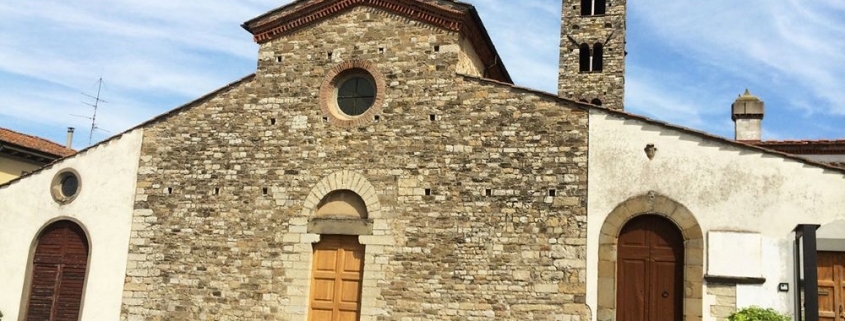Pieve di San Donnino a Villamagna
The structure was founded in the 8th century and rebuilt in the Romanesque period. The economic standing of the Church in the middle of the 13th century was modest (it was taxed for only 13 lira in 1276), but despite this the Church’s priests were in charge of administrating 5 subordinate churches.
The Church was renovated in the 14th century and in 1394 Mariotto di Nardo was put in charge of the construction of a polyptych.In the 15th century the Church was further enhanced with the creation of an altar dedicated to St. Michael.
The patronage of the Church belonged to the parishioners, who commissioned the building of the Compagnia di San Donnino chapel and renovation works (which were mainly limited to the façade) in 1640.
An important restoration campaign, launched in 1930, brought the building back to its original state, eliminating the Baroque embellishments added in the 17th and 18th centuries.
To the right of the Church stands an elegant bell tower, which features three rows of mullioned windows and a belfry that was raised only recently.
The past wealth is evidenced by the artwork contained within the Church.
The right-hand aisle is home to a valuable triptych by Mariotto di Nardo from 1395. Depicted within one finds the Madonna and Child with Saints and Angles, in which appears St. Domninus, recognizable as a knight accompanied by his dog, and the Blessed Gherardo of Villamagna, whose remains are kept in custody within.
The same figures mentioned above are also present kneeling next to the Madonna in the painting attributed to Francesco Granacci, who was himself from Villamagna. In the same nave an altarpiece depicting Madonna Enthroned and St. John the Baptist, St. Nicholas, St. Michael and St. Domninus can be found, a product of the Renaissance school of Ghirlandaio. The Maestro di Signa frescoed the other parts of the altar, decorating the lunette with the Nativity scene, the altar frontal with Christ and God the Father and the soffit of the arch with the Evangelists and Holy Martyrs.
This post is also available in: Italian



